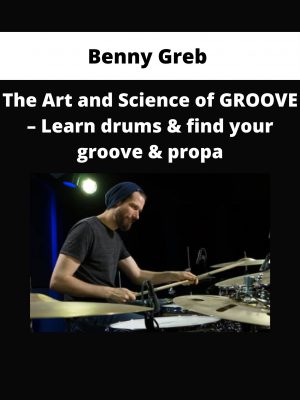TTC Video – The Apocalypse: Controversies and Meaning in Western History
$215 Original price was: $215.$49Current price is: $49.
Shopping Instructions:
- DISCOUNT 15% : SHOP15
- Product Delivery: Within 1 – 12 hours after purchase.
The meaning of the Greek word for apocalypse is “disclosure,” and John’s book discloses dimensions of two age-old mysteries: the character of evil and the nature of hope. So influential was Revelation in the early Christian church that it was placed as the final text in the New Testament, and its popularity has intensified in the centuries since
File size: 10.58 GB
TTC Video – The Apocalypse: Controversies and Meaning in Western History
The Apocalypse: Controversies and Meaning in Western History
Professor Craig R. Koester, Luther Seminary
Exiled to the island of Patmos over 1,900 years ago, a prophet named John wrote a remarkable letter to fellow Christians. That letter is the Apocalypse of John, also known as the book of Revelation, and Christians and non-Christians alike have been debating its message ever since.
The meaning of the Greek word for apocalypse is “disclosure,” and John’s book discloses dimensions of two age-old mysteries: the character of evil and the nature of hope. So influential was Revelation in the early Christian church that it was placed as the final text in the New Testament, and its popularity has intensified in the centuries since.
As a result, its rich language and symbolism pervade Western culture, often in ways not recognized as coming from this unparalleled biblical work:
• The details of heaven in the popular imagination, with its pearly gates, streets of gold, divine throne, and tree and river of life, are taken from the vision of the New Jerusalem at the end of Revelation.
• Paintings and sculptures of the Virgin Mary since the Renaissance typically portray her as Revelation’s “woman clothed with the sun, with the moon under her feet and a crown of twelve stars on her head.
• Revelation contributes some of the best-loved lyrics in Handel’s Messiah, including the “Hallelujah Chorus,” which takes singers and listeners to a realm of sublime mystery, just as John’s text does.
• The words and images of many popular hymns were inspired by Revelation, including the “grapes of wrath” in “Battle Hymn of the Republic” and the lyrics from “When the Saints Go Marching In.”
Revelation is also a touchstone for hopes and fears about the resurrection of the dead and the Last Judgment. And its many baffling images have been studied for clues about the end of the world. The Apocalypse is both a terrifying vision of evil and a celebration of God’s ultimate victory over the forces of darkness. It has inspired great thoughts and great misunderstanding.
What are we to make of such a book? The Apocalypse: Controversies and Meaning in Western History is your guide to this extraordinary work in 24 thought-provoking and enlightening half-hour lectures, divided into three parts:
• The historical and intellectual background of the Apocalypse
• A close reading of John’s text, focusing on the meaning of its images
• The wide-ranging impact of the book on Christian and Western history
Your professor is a preeminent scholar and teacher of the Apocalypse, Professor Craig R. Koester of Luther Seminary in St. Paul, Minnesota. Dr. Koester—who has translated the book of Revelation from its original Greek—draws on years of experience with students, pastors, and lay groups to engage you directly with Revelation, examining its meaning in John’s day and how it continues to be meaningful to contemporary readers.
Book of Predictions? Or Work of Literature?
Professor Koester notes that many of the questions people ask him about the Apocalypse are sparked by sensationalistic interpretations that see it as a book of predictions. Explaining that Revelation follows a literary genre with roots in the apocalyptic writings of the Hebrew prophets, Professor Koester discusses the reasoning behind the futurist perspective and why it is problematic. For example:
• The Antichrist: The word “antichrist” does not appear in Revelation. Instead, it is a term taken from First and Second John in the New Testament, where it refers to those who have left the Christian community, not to any individual tyrant.
• The Rapture: The idea that true Christians will ascend to heaven while others will be left behind to be ruled by the Antichrist occurs nowhere in Revelation. It is a mix of literal and symbolic readings of passages from other books of the Bible.
• Number of the Beast: Today’s Internet continues a centuries-old search for the name encoded in 666, the number of the beast in Revelation. But the context of John’s passage and an ancient puzzle technique give the likely answer: the emperor Nero.
• Armageddon: Now understood as a world-destroying conflict, the battle of Armageddon has a different meaning in Revelation. Instead of missiles and tanks, the only weapon is the sword from Christ’s mouth, symbolizing the power of his word.
Throughout these lectures, Professor Koester focuses on what John actually wrote in the Apocalypse, what his situation tells us about his meaning, how that meaning can be applied to our own lives, and how contemporary biblical scholars relate Revelation to the modern world.
Great Minds Struggling with a Great Book
Professor Koester also introduces major figures in history who have been powerfully drawn to the Apocalypse, among them:
• St. Augustine: Writing in the 5th century in his magnum opus, The City of God, St. Augustine popularized a reading of Christ’s thousand-year reign from Revelation that sees it as timeless and symbolic rather than literal.
• Martin Luther: Luther’s attitude toward the Apocalypse shifted from dismissing it to decoding it and finally reaching a remarkable theological insight. In his translation of the Bible, he included Dürer-inspired illustrations of Revelation that critiqued the papacy of his day.
• William Miller: A former Deist, Miller rigorously analyzed the Bible, concluding from passages in Daniel and Revelation that the world would end in 1844. His ideas created a sensation in 19th-century America and sparked the Adventist movement.
• Sojourner Truth: The African American social reformer Sojourner Truth was also a lay preacher, inspired by Revelation’s vision of a holy city to work tirelessly for women’s rights and the abolition of slavery.
Isaac Newton pored over the mysteries of Revelation even as he revolutionized the study of science. D. H. Lawrence’s struggle was so intense that at the end of his life he wrote his own Apocalypse.
The Real Revelation
Describing the Apocalypse as a roller coaster that hurtles you down into the abyss amid scenes of monsters and plagues, only to send you flying upward toward views of pure light, Professor Koester stresses that if you are reading Revelation and want to despair, then you’ve stopped reading too soon; you’re still in the abyss. You need to turn the page and look to the next chapter, because there will be a wonderful message of hope waiting for you.
And as you read, you will find that the Apocalypse you’ve heard about pales beside the real one. “People tell me time and time again,” says Professor Koester, “that when they actually read the book, study the book, reflect on the book, it really doesn’t look much like all of the impressions that are generated by the popular media, the Internet, the contemporary discussions. You find something much more life-giving.”
-
1Revelation and the Apocalyptic Tradition
-
2Apocalyptic Worldview in Judaism
-
3Apocalyptic Dimension of Early Christianity
-
4Origins of the Book of Revelation
-
5Issues Facing Revelation’s First Readers
-
6God, the Lamb, and the Seven Seals
-
7Seven Trumpets, Temple, and Celebration
-
8The Dragon and the Problem of Evil
-
9The Beasts and Evil in the Political Sphere
-
10The Harlot and the Imperial Economy
-
11The Battle, the Kingdom, and Last Judgment
-
12New Creation and New Jerusalem
-
13Antichrist and the Millennium
-
14Revelation’s Place in the Christian BibleHow did Revelation get into the Bible? Discover that, although it is unlike any other book in the New Testament, the Apocalypse met three broad criteria that early church leaders used to determine which books were authoritative and which were not.
-
15The Apocalypse and Spiritual Life
-
16 The Key to the Meaning of History
-
17Apocalyptic Fervor in the Late Middle Ages
-
18Luther, Radicals, and Roman Catholics
-
19Revelation Takes Musical Form
-
20Revelation in African American Culture
-
21The Apocalypse and Social Progress
-
22Awaiting the End in 1844 and Beyond
-
23Rapture, Tribulation, and Armageddon
-
24The Modern Apocalyptic Renaissance
Related products
Other Courses
Other Courses
Other Courses
Other Courses
Other Courses
Other Courses












